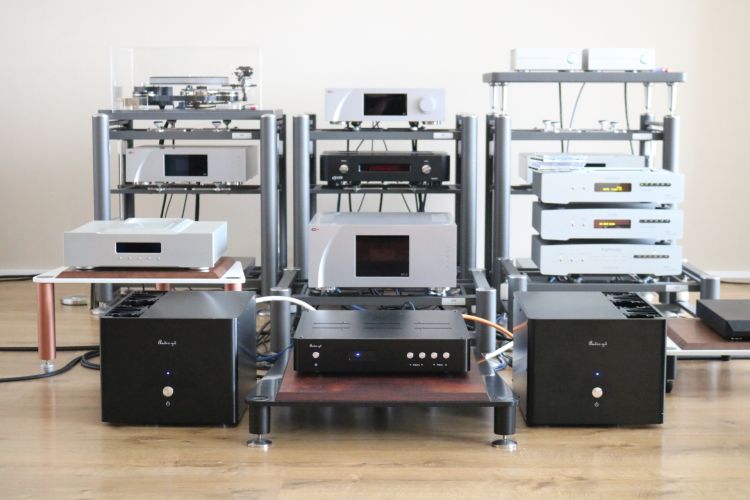
Transistor design with tube characteristics?
The Master 1 is a transistor preamp and it does not try to disguise this fact by sounding bloomy or otherwise rose-tinted, nor would I want it to. While it does not sound tubey (which is what good tube amps also should not sound like, btw), when fully run-in, it also does not sound transistor-y at all. Even seasoned tube-heads and transistor-haters were amazed by this preamp’s fantastically natural sound. The unit simply gets out of the way and for me, that is the best a preamp can do.
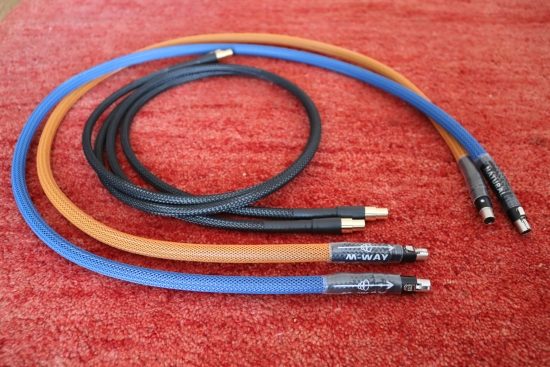
The above ACSS cables as used in the previous Audio GD review are of the smaller variant, to be used between sources and preamps.
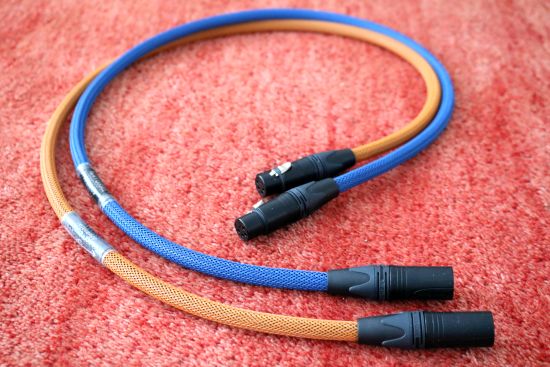
These ACSS cables are of the bigger variant, to be used between the preamp and power amp(s).
ACSS cables
As with all Audio GD products, the Master 1 and Master 2H can be connected either the conventional way or via the proprietary ACSS format. In short: this technology enables signal transfer via current, rather than via voltage, which is helpful for two reasons. First, it enables very simple circuits and simple is nearly always better. Second, the current conveyance is unaffected by the non-linearities that are inherently present in transistors.
Perhaps the most well-known manufacturer to use a similar technology is Krell, who applied the Current Conveyor Technology in their products called “CAST”, which stands for “Current Audio Signal Transmission”. In Japan, there are a few products based on Current Conveyor Technology that they call “SATRI”. In Audio GD products a similar Current Conveyor Technology is applied and to avoid conflict, it is called “ACSS”, which stands for “Audio-GD Current Signal System”. While CAST, SATRI, and ACSS are all forms of Current Conveyor Technology, their implementations are different. Although the three formats use different connectors, Audio GD ACSS products work just fine with KRELL “CAST” and SATRI products. For a more detailed description please head to the Audio GD website.
Supplied with the amplifiers are the older model cables, the same ones as I have used in the earlier Audio GD review. Apart from modest cosmetic changes, the newer cables have a slightly lower noise floor which will be of most benefit with high-efficiency speakers. Since neither my Magicos nor Martin Logans are very efficient, this is of little consequence for me.
Knowing from the previous review just how much the ACSS format improves the musical flow I started my listening (after the preamp had been run in) using the M-Way Natural Reference ACSS interlinks. While this combination clearly showcased the components’ superb quality in pretty much all the important fields, I felt that I obtained the best sound as well as the most neutral balance using the 1.848-euro Vermouth Reference XLR interlinks. Although they are priced out of proportion given the amplifiers’ price, aside from providing a very linear response, these cables also injected precisely the right dose of “woodiness” to yield what I feel is a fully convincing and natural tonality. The M-Way cables that I was loaned along with the amplifiers are only one of the various models that the company offers. So, this is not to say that ACSS is not the way to go with these amps or that M-Way cables are not the ideal match but rather that it might be worth experimenting with different models and brands. For me, the Vermouths were such an excellent match that, with the exception of the comparison with the CH Precision A1.5 power amp using the CH Precision Balanced Link XLR cables, I left them connected throughout the review. The Master 2H power amps do not offer cinch connectors.
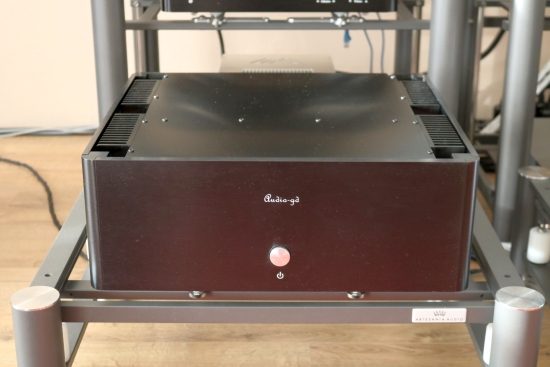
Master 3 stereo power amplifier as it was on visit for the previous Audio GD review
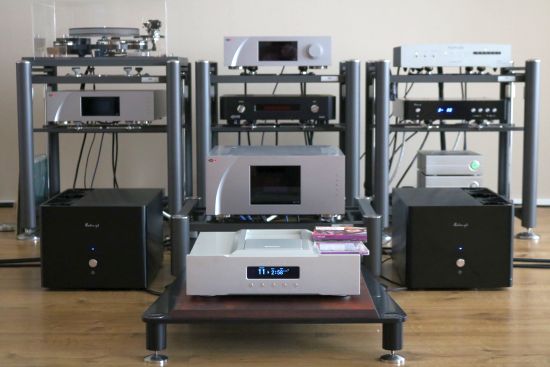
With 340 x 260 x 450cm, the Master 2H’s are quite formidable beasts but at 35KGs each, they are still quite manageable, unlike the hernia-inducing 50-KG CH Precision A1.5.
Power Amplifiers – Master 3 versus Master 2H
Although the Master 3 stereo amp was a fine performer in the previous review, offering good value for money I found the Master 1 preamp and the R8 DAC to be the stars of the show.
Only after the wheels were already set in motion for the Master 2H review in combination with the Master 1 preamp did I think of also asking for the Master 3 amp. Alas, at that time it was not available for comparison. This leaves me to wonder whether or not the 2H’s are basically a model 3 amp divided over 2 chassis or if there have been refinements, in addition to the extra transistors, of course. The Master 3 employs 12 per channel for a total of 24 while the Master 2H’s use 40 per channel for a total of 80.
I guess now we will never know for sure but if you trust my listening impressions using different speakers (Wilsons and Kromas then, Logans and Magicos now) then all the evidence points to the Monos performing in a different league. And, yes, I can say that with full a lot of confidence as I am comparing them again with the CH Precision A1.5.
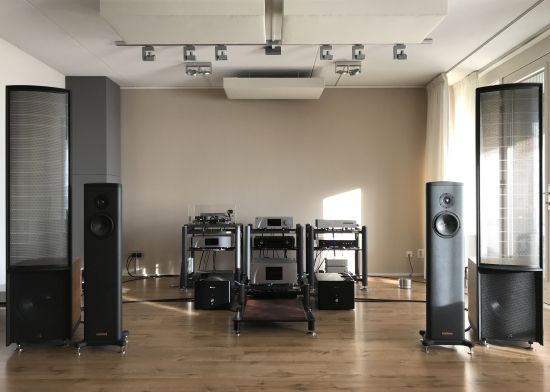
Listening – Master 1 with Master 2H
Ok, ok, enough with the foreplay. Let’s dive in, shall we? Unlike the Master 1 preamp, the Master 2H mono power amps were well-run in. This particular pair has been in use for 5 years and besides this sparing me the uncertainty during running in, it also nicely illustrates that these products not only provide great sound at a very friendly price, they also stand the test of time.
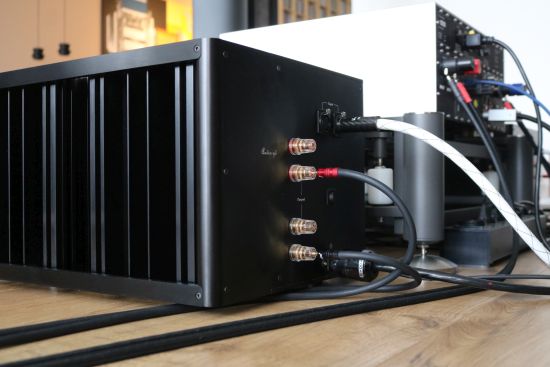
Since the Master 1 preamp already has my vote of confidence and seal of approval, I’ll focus on the complete system with the Master 2H monos. With music provided by the Aqua LinQ streaming endpoint and Formula xHD DAC (with V2 output board) (thus not involving the CH Precision components at this stage) and driving the Magico S1 MkII’s via Driade Flow 405 speaker cables, the Master 1 and Master 2H mono amps sounded flabbergastingly good. Seriously, I am not talking good for the money, nope, their performance is seriously good full stop.
At this point, the amplifiers were still positioned smack on the floor with no coupling other than the standard aluminum feet. These feet, simple as they may seem, may very well be the ideal couplers. while not spikes, they do end in a narrow 1-cm circular contact point. For a truly fair comparison I should have set them up on Artesania Aire platforms like the CH A1.5 but as I have only one spare Aire, the Modular Rack (turned into floor platforms) are not large enough and since the amplifiers sounded so great on the floor I was content to leave them where they were.
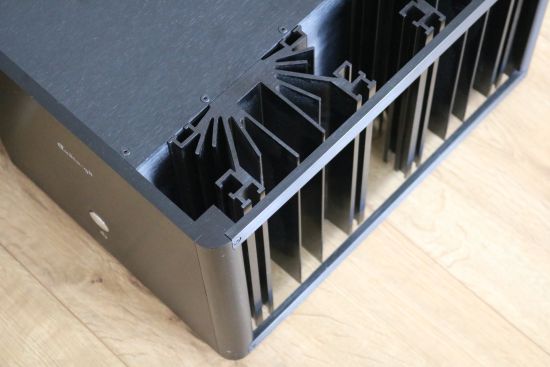
The system delivery is very energetic and dynamic, very neutral and very linear but not in the sense that there was ever too much control or a lack of musicality or flow. In fact, the Audio GD system manages to thread the fine path between fluidity and refinement on the one side and lifelike dynamics and impact on the other side. The sound is neither warm nor cool, not tubey or transitory, there is no rounding or thickening, no thinning or whitening, these components are spectacularly neutral and clearly extremely low in distortion. The presentation is highly natural, with accurate and instant transient attack as well as naturally fluid decays and that is something that is very hard to achieve. I’ve heard plenty of systems sound very refined but lacking drive and liveliness and vice versa, even in the stratospheric price range.
Interestingly, I never heard the slightest indication of smear, as it can happen with amplifiers that employ a large number of transistors in parallel.
Soundstaging-wise, there wasn’t much between the CH system and the Audio GD system, both sounding similarly wide and deep, which makes a strong case not only for the Audio GD pairing but also for the Italian components. If anything, I found the Audio GD + Aqua system even slightly more articulate and direct and perhaps slightly more layered in the depth plane.
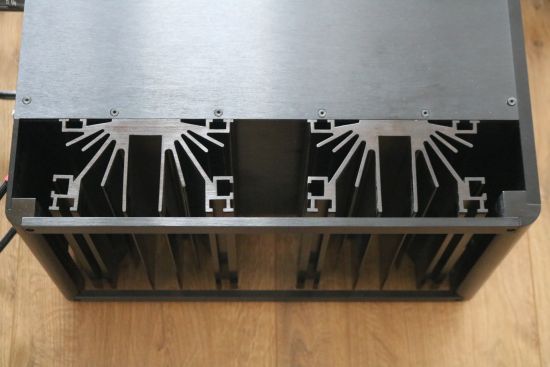
It’s not quite a tie between these systems, though. The Swiss stack’s breathtaking pricetags should be good for something other than tank-like build and a slick interface, right? And indeed, the CH components do a couple of things better and other things differently.
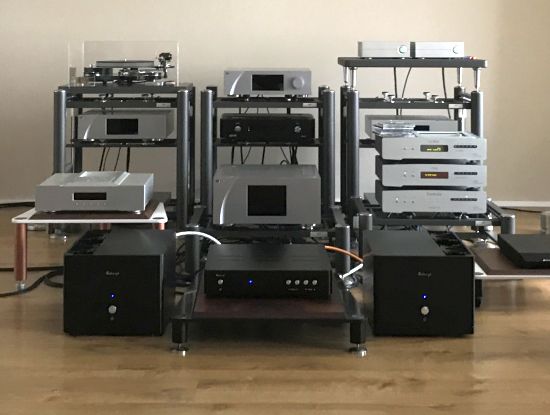
After having also listened using the Martin Logan ESL15A’s, having switched between the two systems and speakers repeatedly and having separated out comparisons between the Audio GD power amps in the context of the CH system, I think I have a good handle on just how the GD power amps differ from the CH power amp. It was already clear from the system performance that the Master 2H mono power amps are neither shrinking violets nor bombastic disco bashers. Just how great they are is very clear in a direct comparison with the almost 7 times as expensive CH Precision A1.5 stereo power amplifier. Using the same CH Precision Balanced Link XLR interlinks, on the surface, the Master 2H’s sound very similar in many ways. For instance, both amps are exceedingly neutral, the Master 2H’s bass is every bit as tight and well-controlled as the A1.5’s, the pacing is just as foot-tappingly fast, the midrange is just as pure and expressive, the overall dynamics are every bit as good and, rather surprisingly, the treble is almost as airy, fluid and refined. This was surprising because the Master 2H’s employ no less than 40 transistors per side! Normally, such amplifiers display a rather coarse treble in addition to having incredible muscle but not the Audio GD, this amp truly sounds like it uses only a modest amount of transistors.
If there were so many similarities, where then do the two brands diverge? Well, when you get down to it, after a couple of minutes, you start to notice the differences. The Master 2H’s omit the uber-refinement that graces amps such as those by Jeff Rowland and indeed CH Precision. And this sense of micro-resolution is not even mostly apparent in the upper treble or upper midrange but rather in the actual midrange. Here is where you can hear that the CH Precision manages even better the trick of not sounding like a transistor amp and injecting the music with the kind of organic fluidity and fullness of texture that is normally more associated with tubes. Quite understandably, the Audio GD amps are transistor amps and while they have absolutely no typical transistor flaws, ultimately, the CH Precision amp gets away from that fact just a little better. This in turn helps the lyrical aspect in performances which makes the A1.5 sound more emotionally engaging and the Master 2H soberer or matter of fact. But, honestly, that’s mostly it! Technically, the A1.5 can’t really improve on the Audio GD’s, not in terms of neutrality and transparency, not in terms of transient spontaneousness, not in terms of dynamics and impact and certainly not in terms of ultimate power, as we will see in the last part of this review which I will perform at audio buddy Niels’ place using Magico Q5 speakers.
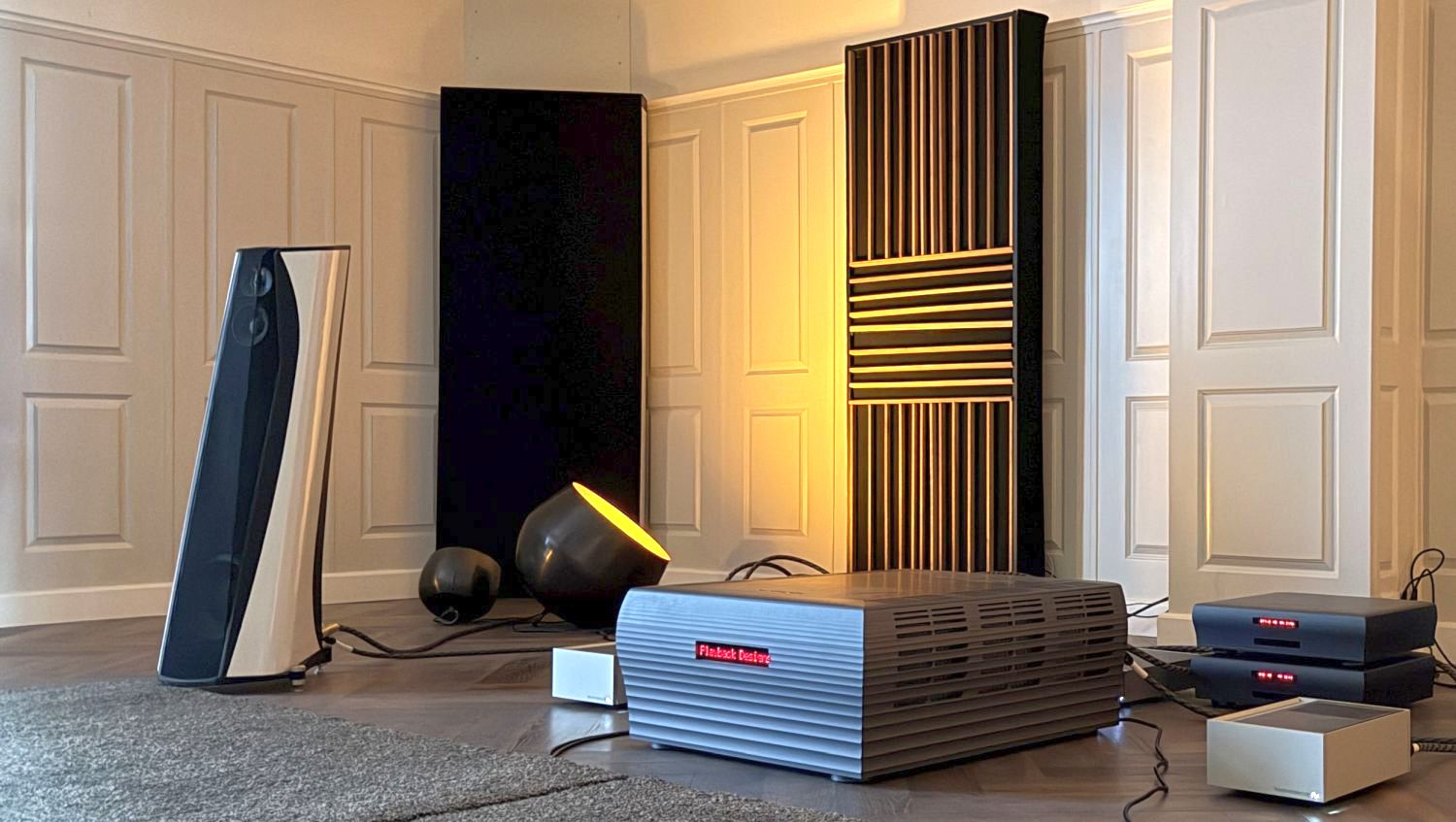
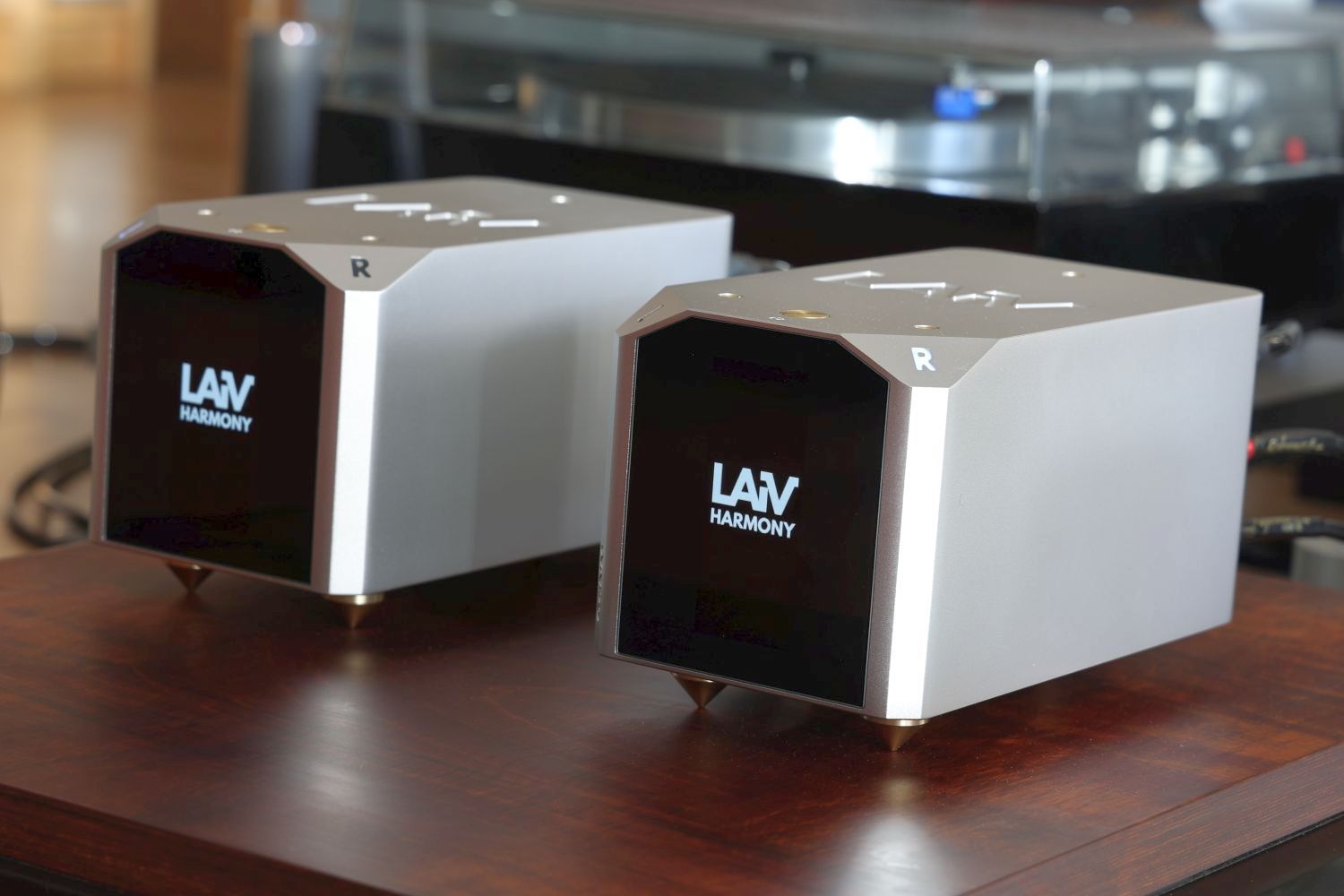
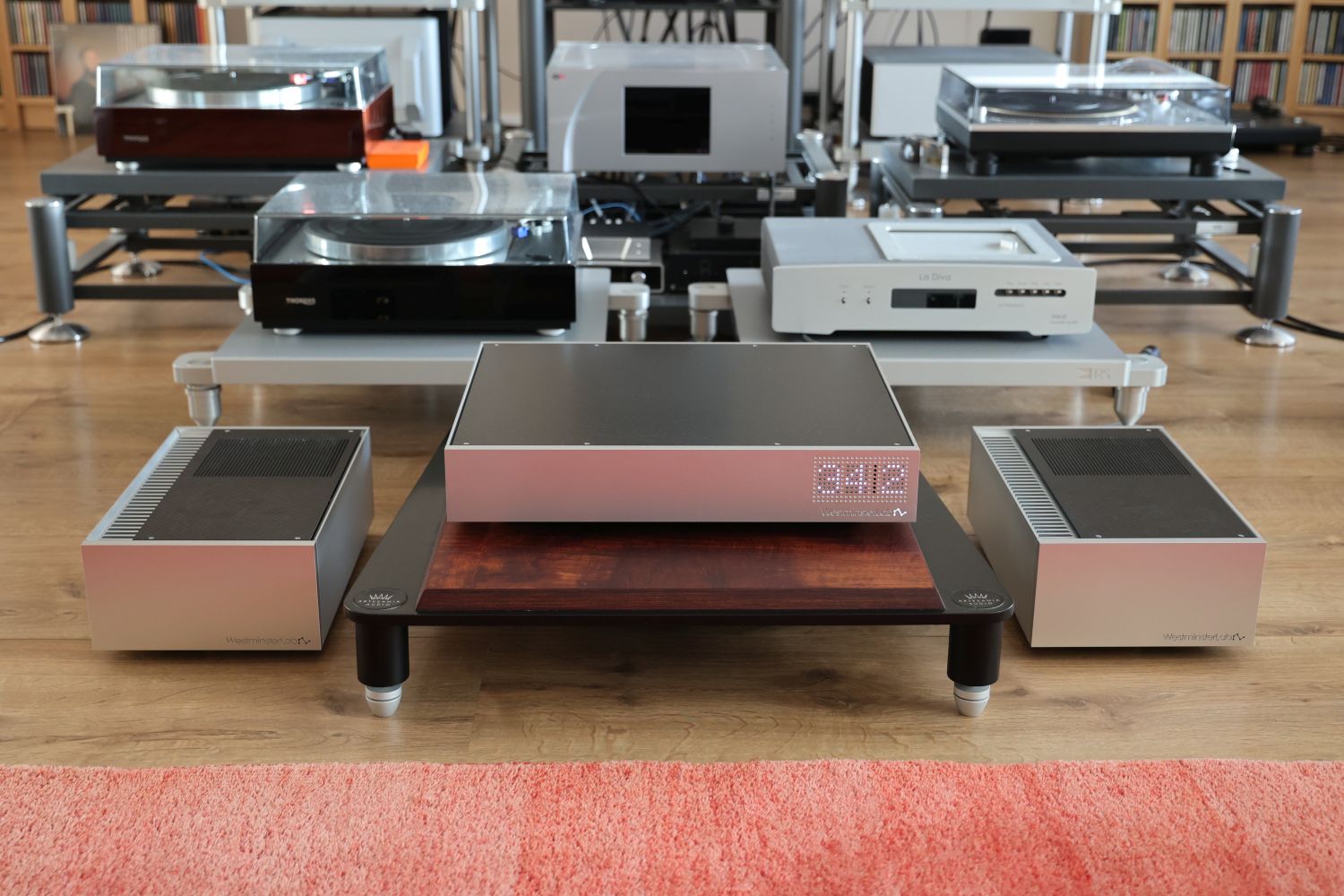
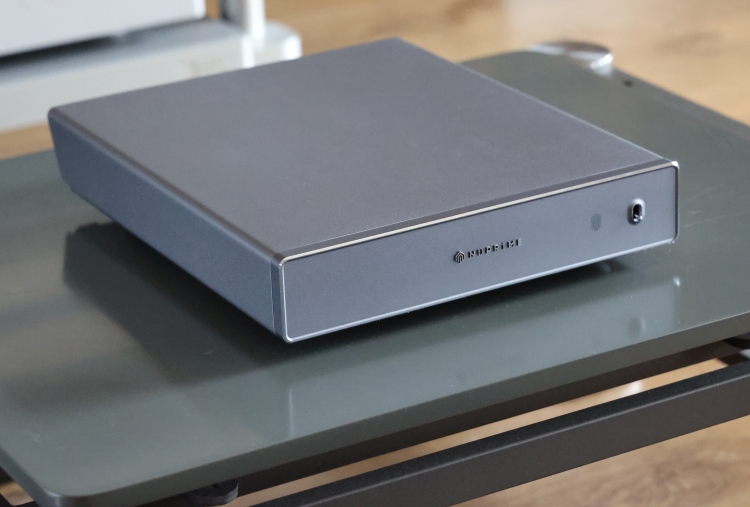
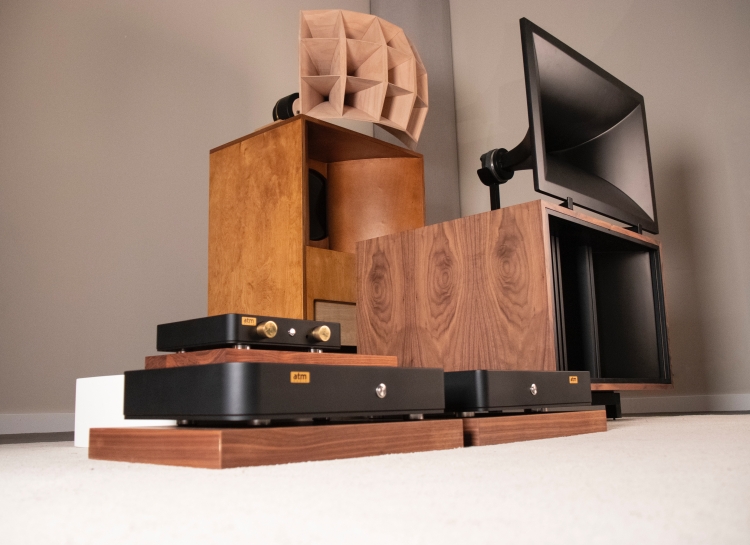
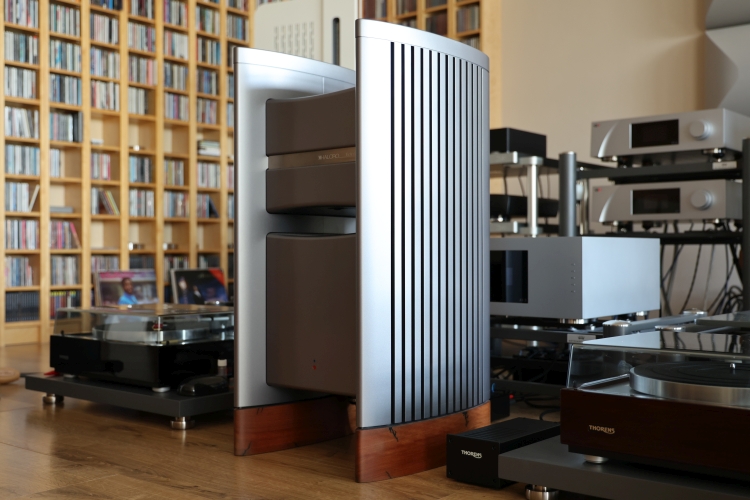
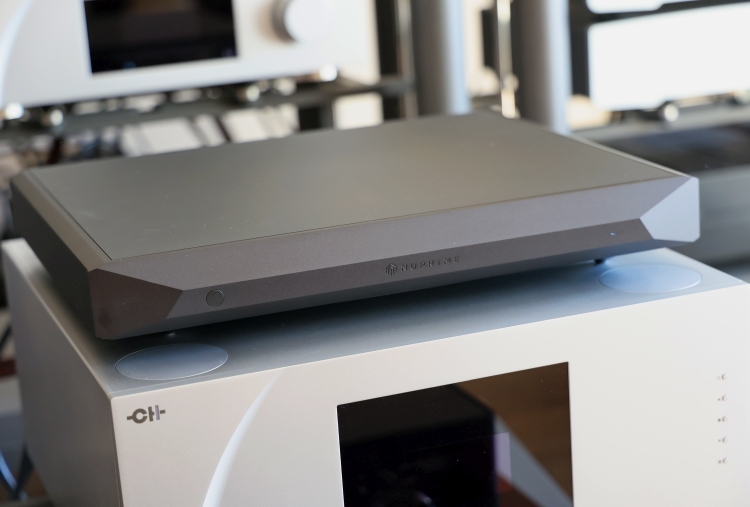
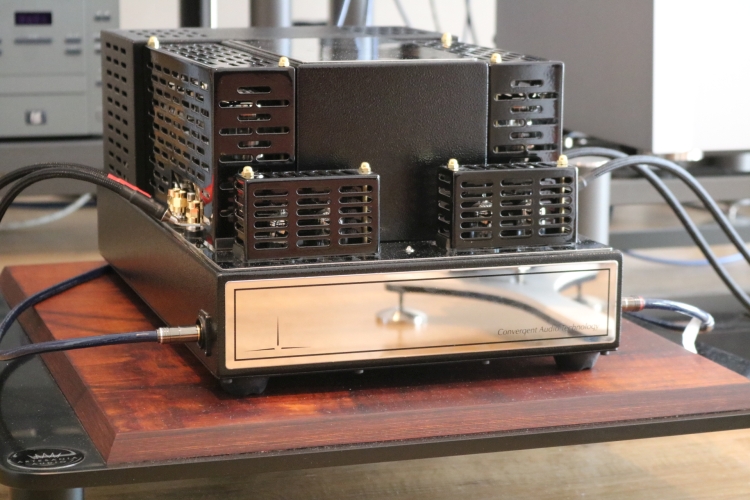
Hello Christiaan,
This sounds almost too good to be true. But even if it is up to the level you describe I guess sales will not be skyrocketing due to the fact it is a “no-name” Chinese brand. Far too few people buy HiFi components with sound performance as the most important criteria.
In the wrap-up you mention Analog Domain. We have previously exchanged comments about the Analog Domain’s M75D. Which I think has one of the best midrange texture and tonality I have heard in a transistor amp. In the Analog Domain I was lacking a tad of openness in the highs and was craving for a little more fullness and power in the bass. I felt the M75D was very controlled in the bass, but to a degree so the lower octaves almost gave a lean impression.
Can you from your sound memory please give some comparative description between the Analog Domain and the reviewed Audio GD?
I also get curious to what the Audio-GD – MASTER 1 Vacuum Valve – Tube preamplifier can bring to the table? Or the Audio-GD – Vacuum Valve HE1 – Regenerative PSU Tube Preamplifier.
I get however a little hesitant when I look at the product portfolio of Audio GD. There is an overwhelming number of products choices. Has enough time and effort been devoted to each one, is quantity more important than quality? Why not devote and refine a smaller portfolio, I think this alone will have many audiophiles look elsewhere. Thanks for another well written review, keep it up.
/ Per
Hi Per, I fully understand. It DOES sound too good to be true but I promise, their sound is as I described:-) And it’s not only me who thinks so, but my friends and even fellow reviewers also agree. I also understand what you’re saying about many people’s motivation for purchasing hi-fi. Well, perhaps my review won’t take away too many sales from the big Swiss brands but at least it gives people who are shopping at around the 4K-mark a very serious option to contemplate. As far as I am concerned these amps have no competition at their price point and are still competitive far beyond that.
I can follow your comments regarding the AD amp and I feel the same way, which is why I ultimately did not buy the amp. Although I cannot compare them directly now, my feeling is that the Audio GD components have a very similar midrange texture as the Analog Domain M75 while indeed offering a more open and airy treble. With regards to the bass, I’m not 100% sure without a direct comparison but I would say it is at least on par with the AD and likely more solid.
An audio buddy has the M75 integrated, if I make a move with the M2H’s myself and I can convince him to bring it along then I will make a follow-up review. I understand your concern regarding their vast portfolio but all their products so far have been excellent. I can’t speak for other countries but in the Netherlands, they are represented by a very hands-on and trustworthy distributor (Magna Hifi) which should help install confidence. The brand certainly has my interest and I may indeed conduct more reviews in the near future.
Thank you very much for your quick and informative answer. The reason why I find your reviews more interesting than a lot of other reviewers’ is that you generally test your review product in several different setups and you give references to other products so I can sometimes put it in relation to products I myself have hands on experience with. And you don’t always praise the latest review with “the best I have heard”, which is otherwise far too common in the industry. We need some people that are not too afraid of actually expressing a well informed and honest opinion. Sure people do have different preferences which complicates matters but I have very little or no respect for reviewers that are saying everything is the best. They may please the sponsors in the short run but loose serious readers in the long run. We need more reviewers with integrity. Could you perhaps get a comment on the tube pre amps from the guys at Magna HiFi? Do they have any experience you can relay?
Hi Per, thanks for the positive feedback:-) I can only comment on what I have heard myself and, alas, I don’t have any experience with Audio GD tube componenents yet.
Hi Christiaan, I wanted to let you know that I purchased the Master 2H monos after reading your review. They are replacing a McIntosh MC402 amplifier. I totally agree with your review and wanted to ask if you have heard or are planning to review the Audio-GD Vacuum HE1 XLR?
Hi James, congrats! And nice to read that you hear it the same way:-) Alas, there are no plans as of yet to review any other AGD gear.
Being so close to Sweden, you could try the Hulgich Duke speakers, they are Kingwa’s reference speakers and they were voiced with a R8, Master 1 and Master 2H (same as what you have) I think you’d be surprised how well they perform for the price. You can contact Göran Niréus at Audio Excite, they are in Stockholm.
Hi Jia, I’ll keep it in mind.
For me, it’s always a pleasure to read reviews of Audio-GD products, especially when compared to other – high-priced – products.
I own a Master 3 amp and a HE1 preamp.
I wonder if the Audio-GD regenerated power supply preamplifiers will be tested?
HE1 or Vacuum valve HE1?
I didn’t have a chance to compare Master 1 and HE1, but many people think there’s a big difference in favor of HE1.
Hi Nandor, Indeed, supposedly the regenerative PS makes a big difference. ATM I’ve not planned to review the HE1 or Vacuum HE1 but you never know:-)
Another suggestion, when placing the monoblocks on wooden floors, best to place them higher as they’re are prone to failures from condensation.
Good tip, thanks. In my case that will not be an issue though as it’s a well-isolated, moisture-free apartment that is pretty much always 20 degrees celsius at minimum.
Plans on reviewing his new XA150 ?
No plans for that ATM.
Great review. I am currently using the R7HE, Master 11S and Master 2H monoblocks driving Verity Leonore, ATC SCM 19 and Raidho C3.1.
The most impressive Audiogd component in my system is actually the Master 2H. Never once have i felt that the amp is running out of steam driving these speakers. i would dare say the weak link in my system are my speakers rather than the Master 2H. the value that they offer are seriously out of this world. in the last few year, i had the opportunity to test out several amps such as Accuphase, Jeff Rowland, Audio Research, Pass Lab (Aleph 0 mono) and YBA but none of these really gave a real world advantage in comparison to the Master 2H. This amp is truly a keeper.
Thank you for the response, Christiaan. Based on the positive comments that I’ve gotten from several Vacuum HE1 XLR owners, I purchased one and it should be shipped at the end of the week. I’ll let you know my impressions when I get it run in.
I am looking for some new monoblocks to try. The AGD M2H has to be one of the better value/performance propositions out there. The AGD HE-2 MK2 is a fair bit more money I cant help but wonder how the 2 AGD amps compare to eachother. I can only assume the HE-2 MK2 must be one hell of an amp.
Alas, I’ve not heard the HE-2 Mk2’s.
Dear Christiaan,
Kinki Studio has received a lot of press and reviews lately.
You reviewed the Kinki Studio EX M-1 back in 2018 and the Audio GD Master 2H Mono Power Amplifiers two years later. I guess you may not have heard the Kinki Studio’s EX B7 mono blocks.
I know I’m out on a thin limb now, but do you have a lasting sonic character impression of Kinki vs. Audio GD from your reviews?
Best regards,
Per
Hi Per, indeed, I have not heard the Kinki Monos. I do have a strong memory of the integrated’s sound and it is very different from the M2H’s. The former is robust, lively and forward and a little rough, the latter is extremely linear and even-handed and more refined, while still very expressive but not rough. However, do note that the Kinki mono’s are said to sound warmer and sweeter than the integrated that I reviewed.
Hello! Very interesting information. Thanks.
After some years from this review, any comment about preamp Audio GD HE1 – SolidState?
Thank you
Alas, I haven’t heard the AGD HE1.